Related Research Articles
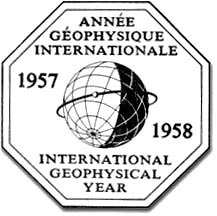
The International Geophysical Year was an international scientific project that lasted from 1 July 1957 to 31 December 1958. It marked the end of a long period during the Cold War when scientific interchange between East and West had been seriously interrupted. Sixty-seven countries participated in IGY projects, although one notable exception was the mainland People's Republic of China, which was protesting against the participation of the Republic of China (Taiwan). East and West agreed to nominate the Belgian Marcel Nicolet as secretary general of the associated international organization.

Space weather is a branch of space physics and aeronomy, or heliophysics, concerned with the time varying conditions within the Solar System, including the solar wind, emphasizing the space surrounding the Earth, including conditions in the magnetosphere, ionosphere, thermosphere, and exosphere. Space weather is distinct from but conceptually related to the terrestrial weather of the atmosphere of Earth. The term space weather was first used in the 1950s and came into common usage in the 1990s.
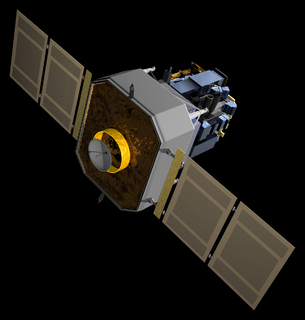
The Solar and Heliospheric Observatory (SOHO) is a spacecraft built by a European industrial consortium led by Matra Marconi Space that was launched on a Lockheed Martin Atlas II AS launch vehicle on December 2, 1995, to study the Sun. It has also discovered over 3,000 comets. It began normal operations in May 1996. It is a joint project between the European Space Agency (ESA) and NASA. Originally planned as a two-year mission, SOHO continues to operate after over 25 years in space; the mission has been extended until the end of 2020 with a likely extension until 2022.
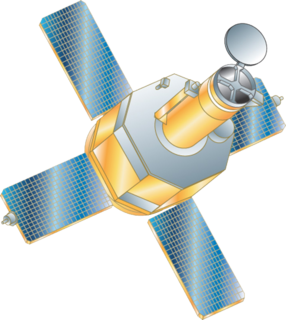
Transition Region and Coronal Explorer (TRACE) was a NASA heliophysics and solar observatory designed to investigate the connections between fine-scale magnetic fields and the associated plasma structures on the Sun by providing high resolution images and observation of the solar photosphere, the transition region, and the corona. A main focus of the TRACE instrument is the fine structure of coronal loops low in the solar atmosphere. TRACE is the fourth spacecraft in the Small Explorer program, launched on April 2, 1998, and obtained its last science image on 21 June 2010 23:56 UT.

The International Heliophysical Year is a UN-sponsored scientifically driven international program of scientific collaboration to understand external drivers of planetary environments and universal processes in solar-terrestrial-planetary-heliospheric physics. The IHY will focus on advancements in all aspects of the heliosphere and its interaction with the interstellar medium. This effort culminates in the "International Heliophysical Year" (IHY) in 2007-2008. The IHY concluded in February, 2009, but was largely continued via the International Space Weather Initiative (ISWI)
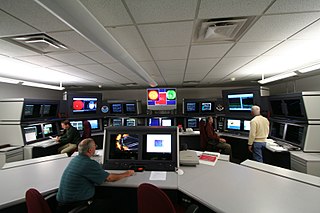
The Space Weather Prediction Center (SWPC), named the Space Environment Center (SEC) until 2007, is a laboratory and service center of the US National Weather Service (NWS), part of the National Oceanic and Atmospheric Administration (NOAA), located in Boulder, Colorado. SWPC continually monitors and forecasts Earth's space environment, providing solar-terrestrial information. SWPC is the official source of space weather alerts and warnings for the United States.
Solar physics is the branch of astrophysics that specializes in the study of the Sun. It deals with detailed measurements that are possible only for our closest star. It intersects with many disciplines of pure physics, astrophysics, and computer science, including fluid dynamics, plasma physics including magnetohydrodynamics, seismology, particle physics, atomic physics, nuclear physics, stellar evolution, space physics, spectroscopy, radiative transfer, applied optics, signal processing, computer vision, computational physics, stellar physics and solar astronomy.

The Solar Dynamics Observatory (SDO) is a NASA mission which has been observing the Sun since 2010. Launched on February 11, 2010, the observatory is part of the Living With a Star (LWS) program.

The US National Center for Atmospheric Research is a US federally funded research and development center (FFRDC) managed by the nonprofit University Corporation for Atmospheric Research (UCAR) and funded by the National Science Foundation (NSF). NCAR has multiple facilities, including the I. M. Pei-designed Mesa Laboratory headquarters in Boulder, Colorado. Studies include meteorology, climate science, atmospheric chemistry, solar-terrestrial interactions, environmental and societal impacts.
The UCL Mullard Space Science Laboratory (MSSL) is the United Kingdom's largest university space research group. MSSL is part of the Department of Space and Climate Physics at University College London (UCL), one of the first universities in the world to conduct space research. Since its establishment, MSSL has participated in 35 satellite missions, 10 of which are currently in operation, and in over 200 sounding rocket experiments.
The NASA Space Science Data Coordinated Archive (NSSDCA) serves as the permanent archive for NASA space science mission data. "Space science" includes astronomy and astrophysics, solar and space plasma physics, and planetary and lunar science. As the permanent archive, NSSDCA teams with NASA's discipline-specific space science "active archives" which provide access to data to researchers and, in some cases, to the general public. NSSDCA also serves as NASA's permanent archive for space physics mission data. It provides access to several geophysical models and to data from some non-NASA mission data. NSSDCA was called the National Space Science Data Center (NSSDC) prior to March 2015.
A virtual observatory (VO) is a collection of interoperating data archives and software tools which utilize the internet to form a scientific research environment in which astronomical research programs can be conducted.
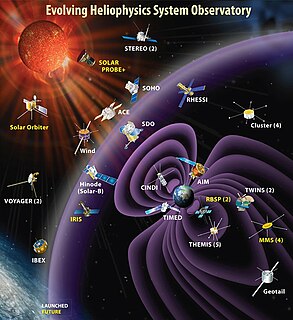
Heliophysics is the science of the physical connections between the Sun and the solar system. NASA defines heliophysics as "(1) the comprehensive new term for the science of the Sun - Solar System Connection, (2) the exploration, discovery, and understanding of Earth's space environment, and (3) the system science that unites all of the linked phenomena in the region of the cosmos influenced by a star like our Sun. Heliophysics concentrates on the Sun, and its effects on Earth, the other planets of the solar system, and the changing conditions in space. Heliophysics is concerned with the magnetosphere, ionosphere, thermosphere, mesosphere, and upper atmosphere of the Earth and other planets. Heliophysics combines the science of the Sun, corona, heliosphere and geospace. Heliophysics encompasses cosmic rays and particle acceleration, space weather and radiation, dust and magnetic reconnection, nuclear energy generation and internal solar dynamics, solar activity and stellar magnetic fields, aeronomy and space plasmas, magnetic fields and global change, and the interactions of the solar system with our galaxy."

The Heliophysics Science Division of the Goddard Space Flight Center (NASA) conducts research on the Sun, its extended solar system environment, and interactions of Earth, other planets, small bodies, and interstellar gas with the heliosphere. Division research also encompasses geospace—Earth's uppermost atmosphere, the ionosphere, and the magnetosphere—and the changing environmental conditions throughout the coupled heliosphere.

Heliophysics is an aspect of NASA science that enables understanding the Sun, heliosphere, and planetary environments as a single connected system. In addition to solar processes, this domain of study includes the interaction of solar plasma and solar radiation with Earth, the other planets, and the galaxy. By analyzing the connections between the Sun, solar wind, and planetary space environments, the fundamental physical processes that occur throughout the universe are uncovered. Understanding the connections between the Sun and its planets will allow for predicting the impacts of solar interaction on humans, technological systems, and even the presence of life itself. This is also the stated goal of Science Mission Directorate's Heliophysics Research.

The Nexus for Exoplanet System Science (NExSS) initiative is a National Aeronautics and Space Administration (NASA) virtual institute designed to foster interdisciplinary collaboration in the search for life on exoplanets. Led by the Ames Research Center, the NASA Exoplanet Science Institute, and the Goddard Institute for Space Studies, NExSS will help organize the search for life on exoplanets from participating research teams and acquire new knowledge about exoplanets and extrasolar planetary systems.

Barbara June Thompson is an American solar physicist. She is a scientist at Goddard Space Flight Center where she researches coronal mass ejections and the dynamics of coronal structures. Thompson was the project scientist for NASA's Solar Dynamics Observatory mission through development and early flight.
Richard R. Fisher is an American astrophysicist who worked in academia and at NASA. He retired in 2012.

The Interstellar Mapping and Acceleration Probe(IMAP) is a heliophysics mission that will simultaneously investigate two important and coupled science topics in the heliosphere: the acceleration of energetic particles and interaction of the solar wind with the local interstellar medium. These science topics are coupled because particles accelerated in the inner heliosphere play crucial roles in the outer heliospheric interaction. In 2018, NASA selected a team led by David J. McComas of Princeton University to implement the mission, which is currently planned to launch in February 2025. IMAP will be a Sun-tracking spin-stabilized satellite in orbit about the Sun–Earth L1 Lagrange point with a science payload of ten instruments. IMAP will also continuously broadcast real-time in-situ data that can be used for space weather prediction.
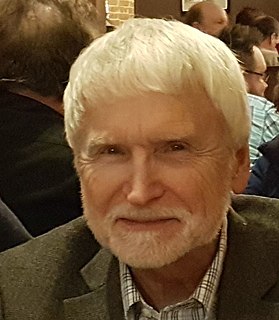
George L. Siscoe is an American physicist and professor emeritus of space physics at Boston University. He has made major contributions to the understanding of geomagnetism in the Earth's magnetosphere and the heliosphere, particularly in helping to establishing the field of space weather and in establishing the term "Heliophysics" - a term which is now standard use.
References
- ↑ "SPASE History".
- ↑ King, Todd; James Thieman; Aaron Roberts (1 June 2010). "SPASE 2.0: a standard data model for space physics". Earth Science Informatics. 3 (1–2): 67–73. doi:10.1007/s12145-010-0053-4.
- ↑ Weigel, Robert; Baker, Daniel N.; Roberts, D. Aaron; King, Todd (2009). "Using Virtual Observatories for Heliophysics Research". Eos, Transactions, American Geophysical Union. 90 (47): 441–442. Bibcode:2009EOSTr..90..441W. doi: 10.1029/2009EO470001 .
- ↑ Thieman, James; D. A. Roberts; T. A. King; C. C. Harvey; C. H. Perry & P. J. Richards (2010). "Spase And The Heliophysics Virtual Observatories". Data Science Journal. 9: IGY85–IGY93. doi: 10.2481/dsj.SS_IGY-019 .
- ↑ "SPASE Data Model".
- ↑ "SPASE Conventions".
- ↑ "SPASE Tools".
- ↑ "SPASE Services".
- ↑ "Centre de Données de la Physique des Plasmas".
- ↑ "CDPP and the VO".
- ↑ "AMDA Time Table Repository".
- ↑ "IUGONET".
- ↑ "IUGONET Metadata Format".
- ↑ "IMPEx".
- ↑ "IMPEx Data Model".